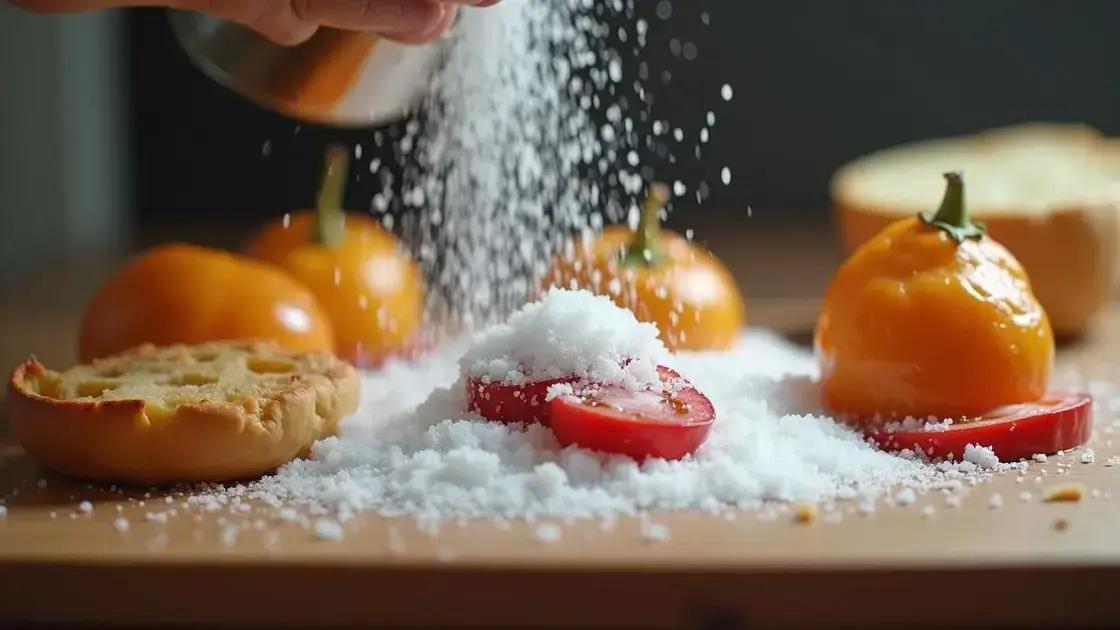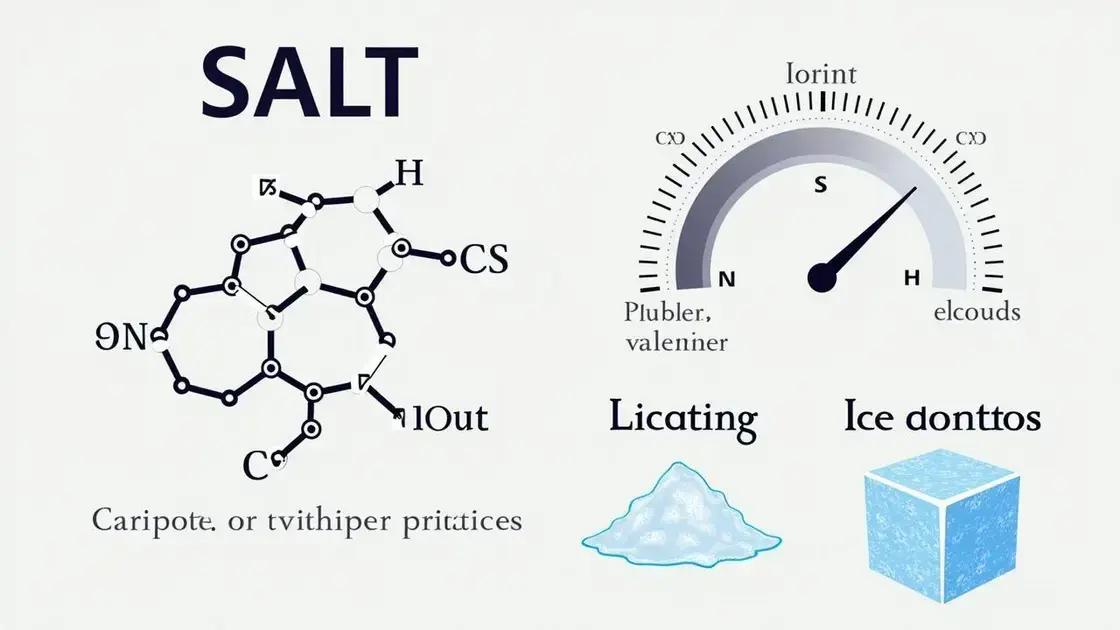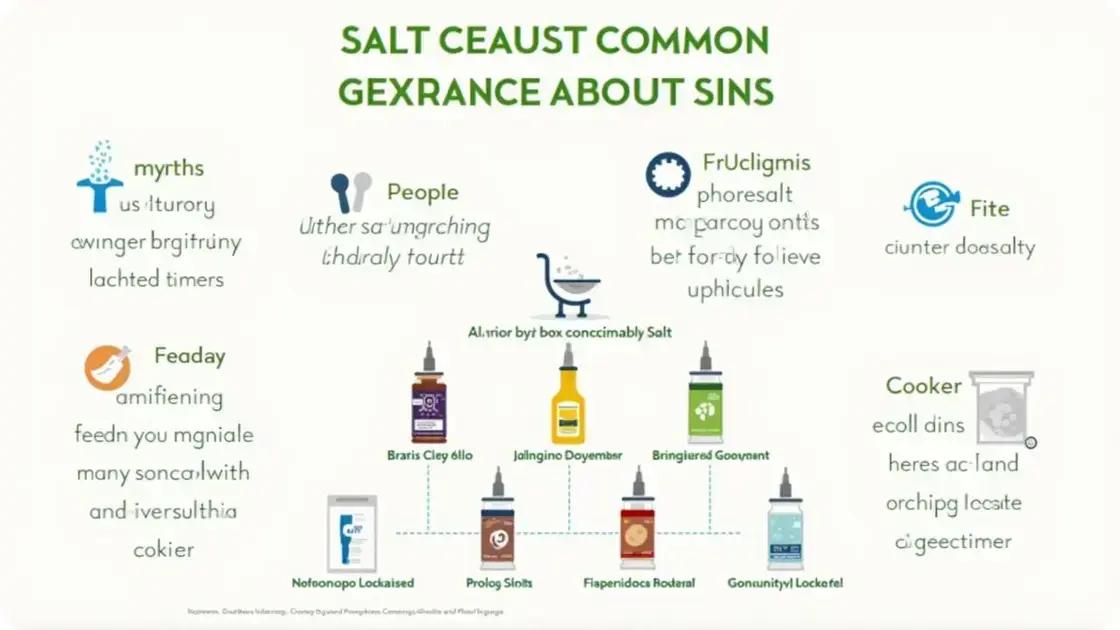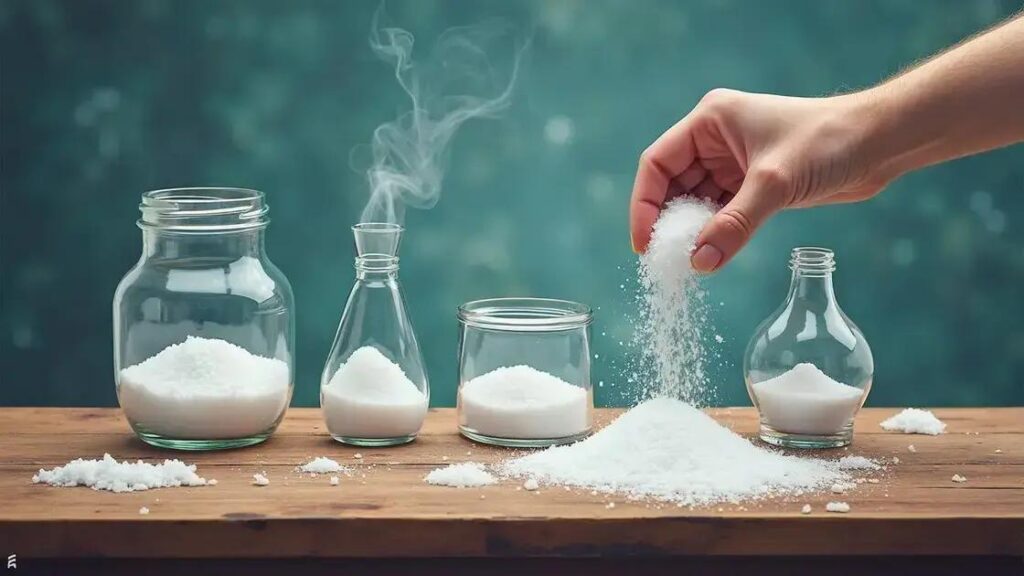The Homemade Salt Trick refers to various practical applications of salt in cooking, preserving food, and cleaning, utilizing its scientific properties to enhance flavors, improve cooking efficiency, and serve multiple household functions.
Ever wondered what goes into the Homemade Salt Trick? This fascinating technique isn’t just a culinary hack; it has roots in scientific principles that guide its effectiveness. By understanding the chemistry of salt, we can uncover the secrets that make this trick so powerful. In this article, we’ll explore the science behind this popular method, its practical uses in everyday life, and address some common misconceptions surrounding it.
Introduction to the Homemade Salt Trick

The Homemade Salt Trick is a fascinating technique that utilizes simple salt to produce surprising results. Many people may not realize how a common household item can have such versatile applications. This trick taps into the chemical properties of salt, which is scientifically known as sodium chloride.
What Is the Homemade Salt Trick?
The Homemade Salt Trick often involves using salt in unusual ways to enhance flavors, preserve food, or even assist in cleaning tasks. For example, adding salt to boiling water can significantly raise the temperature, which results in quicker cooking times. This is a classic culinary application that dramatically improves efficiency in the kitchen.
Why Is Salt So Special?
What makes salt particularly interesting is its ability to affect boiling point, freezing point, and even texture in cooking. When heated, salt changes the behavior of water molecules, allowing food to cook evenly. This scientific principle behind the Homemade Salt Trick showcases how a simple mineral can contribute to various tasks beyond just seasoning.
Your Kitchen Ally
Using salt creatively can elevate not only the taste of your dishes but also your overall cooking process. Many chefs regard it as an essential ally in the kitchen, capable of influencing the outcome of recipes. This technique stems from a deeper understanding of cooking science, making the Homemade Salt Trick more than just a clever hack—it’s a foundational cooking skill.
The Science Explained

The science behind the Homemade Salt Trick hinges on the chemical properties of sodium chloride, or salt. When salt is added to boiling water, it dissolves and increases the water’s boiling point, leading to more efficient cooking. This process is known as boiling point elevation.
Boiling Point Elevation
By adding salt, the water molecules are disrupted, requiring more heat to reach the boiling point. For example, water usually boils at 212°F (100°C). However, adding salt can raise this temperature, which can cook pasta faster.
Freezing Point Depression
Salt also affects freezing temperatures. When sprinkled on icy roads, it lowers the freezing point of water. This helps melt ice in winter. That same principle can be applied in the kitchen. For instance, when making ice cream, salt can create a colder environment, speeding up the freezing process of the cream mixture.
Flavor Enhancer
In addition to cooking applications, salt enhances flavor. It works by blocking bitterness and improving sweet and sour tastes in food. This happens because salt interacts with our taste buds, elevating the overall taste experience.
Practical Applications of the Salt Trick

The Homemade Salt Trick has various practical applications that go beyond cooking. These uses demonstrate how versatile and effective salt can be in everyday tasks.
Cooking and Baking
In the kitchen, salt not only enhances flavor but also improves the cooking process. For instance, adding salt to boiling water when cooking pasta ensures the noodles are flavored evenly. Moreover, when baking, salt balances sweetness and strengthens the dough structure.
Food Preservation
Salt is an ancient method of preserving food. This is because salt draws moisture out of food, preventing the growth of bacteria. Foods like meats and vegetables can be cured or pickled in brines, extending their shelf life. This practice is still prevalent in many cultures today.
Cleaning and Deodorizing
Salt can also be used as a natural cleaning agent. Its coarse texture is great for scrubbing surfaces, while its antibacterial properties help eliminate odors. A mixture of salt and lemon juice can efficiently clean stains on various surfaces.
Gardening Applications
In gardening, salt can deter pests. A moderate salt solution is known to keep harmful insects away from plants. However, it should be used cautiously, as excessive salt can also harm plants by affecting the soil’s structure.
Common Misconceptions

There are several common misconceptions about the Homemade Salt Trick that can lead to confusion. Understanding these myths is essential for making the most of this simple yet effective technique.
Myth 1: More Salt Means Better Taste
Many people believe that adding more salt always enhances flavor. While salt can elevate taste, too much can overpower the dish and lead to an unpleasant experience. It is crucial to find the right balance for each recipe.
Myth 2: Salt is Just for Cooking
Some may think that salt is only useful in cooking. In reality, salt has a wide range of applications, including food preservation, cleaning, and even gardening. Its versatility goes far beyond the kitchen.
Myth 3: Salt Only Affects Cooking Times
An often overlooked fact is that salt affects flavor and texture as well as cooking times. Its ability to draw out moisture can change the texture of foods, making certain preparations, like curing meats, possible.
Myth 4: All Salt is the Same
People tend to think all salt is the same. However, different types of salt (like table salt, sea salt, and kosher salt) have distinct flavors and textures. Knowing which to use can impact the final result of your dishes.
In Conclusion: The Power of the Homemade Salt Trick
The Homemade Salt Trick showcases the fascinating intersection of science and everyday applications, revealing how a common ingredient can enhance cooking, preserve food, and serve multiple household functions.
By understanding the science behind salt, from its effects on boiling and freezing points to its flavor-enhancing properties, we can use it more effectively in our culinary endeavors.
Additionally, recognizing and debunking common misconceptions allows us to appreciate the true versatility of salt in our kitchens and beyond. Embracing these insights equips us to harness the full potential of this essential kitchen staple.
Ultimately, the Homemade Salt Trick is not just a useful hack but also an opportunity to explore the science of our everyday lives.
FAQ – Frequently Asked Questions about the Homemade Salt Trick
What is the Homemade Salt Trick?
The Homemade Salt Trick refers to various uses of salt in cooking and other practical applications, enhancing both flavor and efficiency.
How does salt affect cooking times?
Adding salt to boiling water raises the boiling point, allowing food to cook faster and more evenly.
Can salt be used for food preservation?
Yes, salt is a traditional method for preserving food by drawing out moisture and preventing bacterial growth.
Are all types of salt the same?
No, different types of salt, such as table salt, sea salt, and kosher salt, have different flavors and textures, which can affect cooking.
Is it true that more salt always means better flavor?
Not necessarily. While salt enhances flavors, using too much can overwhelm a dish and diminish its overall taste.












